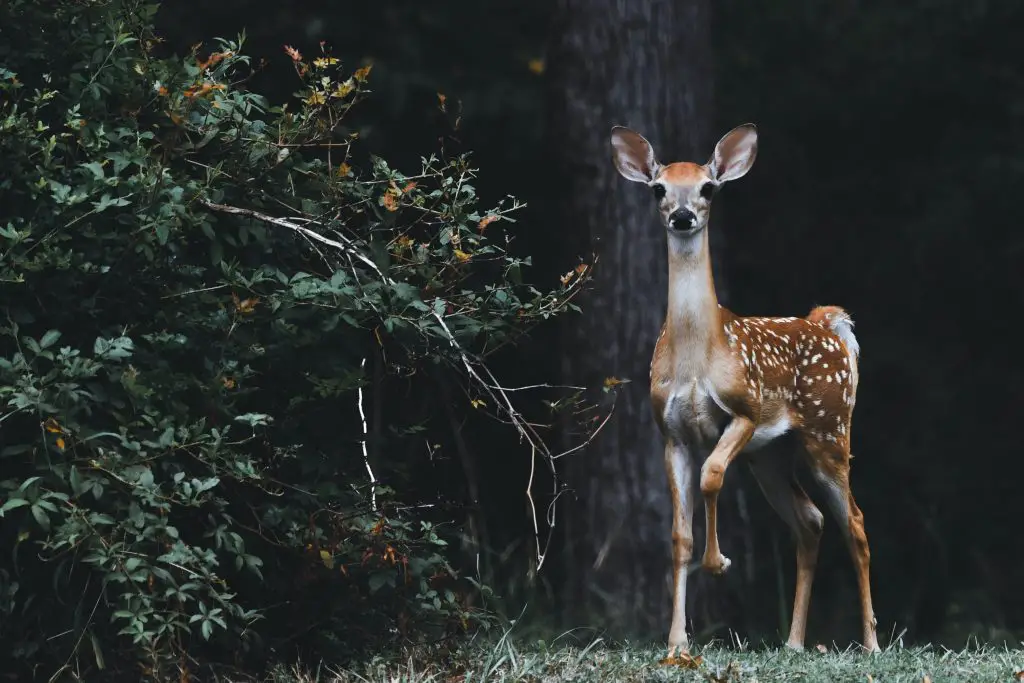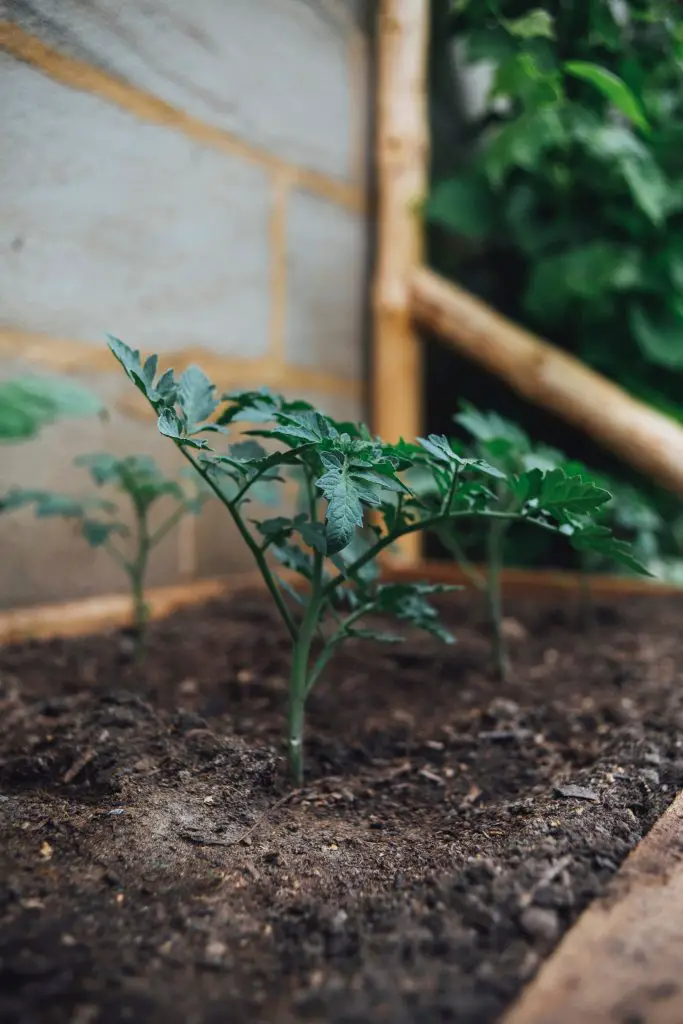Do Deer Eat Tomato Plants? If So What Can I Do To Protect Them? Tomato plants are one of the most prized plants grown in the vegetable garden because their flavour is so much better than anything that you can purchase from a store. However, if you are thinking of growing tomatoes and you live in an area that has a high deer population one of the most common questions is will the deer eat the tomato plants?
Deer love to eat tomatoes along with many of the other things that you are growing in your vegetable garden. So if you want to have a crop of any significance you must protect the plants from the deer and the only truly effective way to do this is to exclude the deer from your plants and garden by protecting plants with physical barriers individually or by fencing your entire garden.
To protect individual plants you will need to surround the plants with a relatively sturdy mesh or some sort of wire fencing that is strong enough to avoid having the mesh bent by the deer or having them poke their nose through the holes in the mesh to get to the plants.

To erect protections for the plants you can use a couple of panels of temporary fencing or use strong stakes to erect a structure made of stiff wire panels.
The more extreme option is to protect your entire garden with a fence which is a relatively expensive exercise because the fence needs to be around 8 ft tall. The height of the fence may seem excessive, however, there have been academic studies which have shown that dear can clear a 6 ft fence with relative ease.
However, for some people the expense of putting a fence up or the practicalities of doing so make this a impractical solution to keep the deer out of the garden. So what else can you do to protect your plants?
Other Methods For Protecting Plants
There are several options that can be employed to help to protect your garden from the deer, however, none of them are as effective as physically excluding the deer from your garden, as deer are extremely persistent pests.
The first option which will help to reduce the number of visitors that you get is to consider the design of your garden. It is best to select plants that deer do not like to put in the outer parts of your garden which are the areas which the deer will first encounter when coming onto your property.

As a general deer do not like plants that are highly fragrant, toxic or prickly so those types of plants should be planted at the edges of the garden. Plants such as french lavenders or rosemary, which are relatively tall, are absolutely ideal because they also block the deers’ visibility of other things in the garden which makes the garden less tempting to enter.
The second thing that you can do with your garden design is to ensure that’s the plants that the deer really like such as most things that are in your vegetable garden are placed in areas close to where your house is. your day-to-day activity will help to generally keep the deer away from that area at least during the day.
However, these measures will typically not be enough to protect your plants and many people resort to the use of deer repellents which come in many forms. Deer repellent products can generally be divided into chemical or mechanical repellents. The chemical repellents are generally more effective.
Chemical Deer Repellents
There are are a wide range of deer repellents available on the market which can be categorized as either fear-inducing, pain-inducing, or ones that generally change the flavors or fragrance of the plant. Of these types, the fear-inducing repellents are by far the most effective.

These varieties typically contain a range of ingredients such as coyote urine, blood, or putrified eggs which are designed to trick the deer into thinking that there is a predator nearby. The putrified eggs work well because it emits smells that are similar to those produced by common predators.
However, despite these types of repellents being quite effective, they do have their limitations. An academic study on a range of different commercial deer repellents found that even the most effective products had limits in terms of how long left could protect plants even when reapplied regularly.
Typically, the best products were effective for approximately 10 to 12 weeks, however, after that period the deer would resume their normal feeding habits. As a result of these findings, we generally recommend that people purchase at least two different deer repellent products as this will allow you to alternate between them every 3 months or so.
The two products that we recommend are deer out and plantskydd because they are both fear-inducing chemical repellents based on different ingredients and therefore smell quite different. To see the latest price of these products click on the links above to visit Amazon.
Mechanical Deer Repellents
There are also a wide range of mechanical deer repellents that are available on the market for you to purchase, however, generally speaking, these devices are not as effective as the chemical repellents. Mechanical repellents can be divided up into three general categories which include motion-activated sprinklers systems, ultrasonic devices, and predator eyes.
The most effective device of the three is motion-activated sprinklers however they have a similar problem to the chemical repellents as the deer can quickly become accustomed to their presence so they need to be used sparingly as part of an overall deer defense plan.

We recommend that if you’re going to purchase a device of this nature that you use it at the critical points of the year, which is when the tomatoes are beginning to ripen on the plant as this will ensure you have the best chance of getting a crop. During this period is a good idea to periodically move the position of the motion-activated sprinkler to avoid animals getting used to the device.
If you are considering purchasing a device the price we would recommend is the Orbit 62100 Yard Enforcer because it has a 40ft detection range which ensures that a large area can be covered by single device. To see the latest price on Amazon click on the link above.
The second device that has been commonly sold in the marketplace is ultrasonic devices. These devices have had large amounts of academic research done on them to assess their effectiveness. The studies have consistently shown that these devices do not work well and do not affect animal behavior in any significant way despite what the manufacturer may say. As a result of this, we generally do not recommend that you purchase a device of this nature.
The third type of device which is commonly offered is predator eyes which have had very little academic research done on their effectiveness as such I have had to rely upon reviews from people that have purchased the products. The general response of customers purchasing this product has been relatively negative with most people finding that the product does not work particularly well.
Some customers even posted night-vision footage of deer eating their plants right next to the predator eyes devices. This evidence suggests that if the predator eyes devices are effective they are not effective for very long and therefore we would not recommend that you purchase a product of this nature.
I hope you found this article useful and have great success growing your tomatoes at home if you have any additional comments or questions please leave them in the section below.
Relevant Articles
How High Can A Deer Jump? (And What Type Of Fence Do I Need To Build To Keep Them Out)
How To Keep Deer Out Of The Vegetable Garden?
Does Deer Repellent Really Work? (All The Answers Based On Academic Research)
Will Deer Eat Lettuce? And How To Stop Them
